Your 4-Step Action Plan for Financial Planning Month 🇿🇦
October is officially recognised as Financial Planning Month, and it couldn't be a better time to pause the noise of daily life and focus on your money future. In a South African economy where the Rand's strength is always a talking point, simply managing your money isn't enough—you need to plan to make it resilient.
Financial planning isn't just for those with large investment portfolios; it’s for every South African who wants control, clarity, and peace of mind. Remember: as an education company, we provide the knowledge and tools, not personalised financial advice. This month, let's focus on the education needed to build your own robust financial foundation.
Step 1: Know Your Numbers – Mastering Financial Control
You can’t steer a ship without a map. Financial planning begins with understanding your current reality.
- The Net Worth Snapshot: Many people think of this as only for the wealthy. It's not! Your Net Worth is a simple equation: What you Own (Assets) \minus What you Owe (Liabilities). Calculating this monthly or quarterly is a powerful educational tool that shows you if you are moving forward or backward.
- The Budget Reality Check: Your budget isn't a restriction; it's a statement of your priorities. Take a hard look at where your Rand goes. Use the 50/30/20 Rule as an educational guideline:
- 50% for Needs (Rent, groceries, transport).
- 30% for Wants (Entertainment, eating out).
- 20% for Financial Goals (Debt repayment, saving, investing).
Step 2: Tame the Debt Monster (Good vs. Bad)
Debt is a massive barrier to achieving your financial goals. Learn to differentiate between the types of debt you hold and how to manage them.
- Good Debt vs. Bad Debt: Good Debt typically buys an asset that can increase in value or generate income (like a home loan). Bad Debt is for depreciating goods or immediate consumption (like store accounts or high-interest credit cards).
- The Credit Score Secret: Your credit score is more than just a number; it’s your financial reputation. Educate yourself on the factors that build it: paying on time, using a small percentage of your available credit, and checking your report annually. A higher score translates to better interest rates in the future.
- Actionable Education: If you have high-interest debt, learn the math behind the "Debt Avalanche" or "Debt Snowball" methods to see which strategy helps you pay it off faster and save on interest.
Step 3: Future-Proofing with Risk & Growth Tools
Planning isn't complete without protecting what you have and positioning yourself for growth.
- Emergency Fund Fundamentals: Every South African needs a financial safety net. Learn to build an emergency fund covering 3 to 6 months of living expenses in an accessible, low-risk account. This fund protects your long-term plans (like your retirement savings) from unexpected shocks, such as a sudden job loss or medical expense.
- The Power of Tax-Free Savings (TFSA): The Tax-Free Savings Account (TFSA) is one of the most powerful education tools the South African government offers. Understand the rules: you can contribute up to R36,000 per year (and R500,000 lifetime limit), and any growth, interest, or withdrawal is 100% tax-free. It’s an essential part of long-term planning.
- Risk Education (Insurance & Wills): Protecting your income is a key part of planning. Educate yourself on different types of protection, such as income protection insurance, disability cover, and drafting a Will. A Will is the ultimate act of financial planning; it dictates how your assets are distributed, saving your loved ones time, money, and stress.
Step 4: Think Consistent, Not Convenient
Financial planning is a marathon, not a sprint. Consistency is your greatest asset.
- Harnessing Compounding: Understand that compounding is simply earning returns on your previous returns. The single biggest lesson here is Time – the earlier you start, the more time your money has to grow exponentially.
- The Stokvel Mindset: The success of the South African stokvel lies in its discipline and consistency. Apply that same discipline to your formal savings and investments. Set up automated transfers immediately after payday.
Your October Challenge
This month, commit to one single educational task: calculate your current net worth and then set up an automated, small recurring transfer into a new savings or investment account.
Financial education is the key to financial power. Start your journey this Financial Planning Month!







